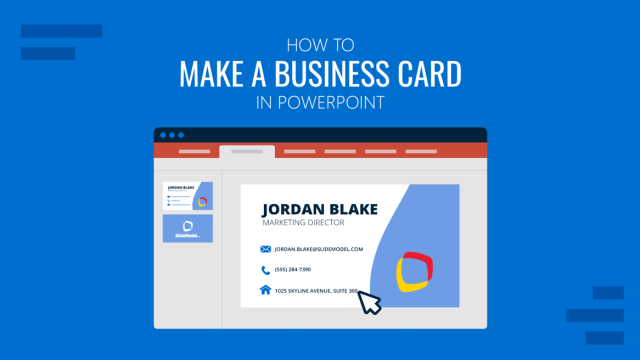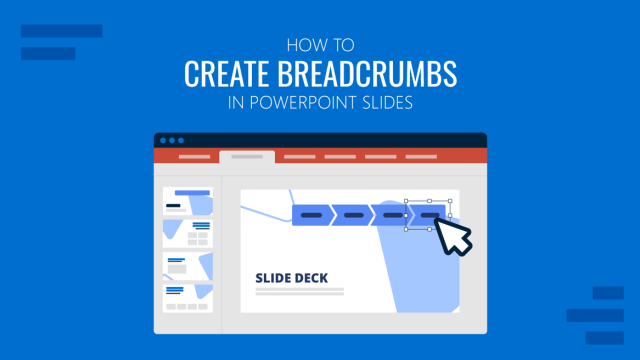
Over the years, PowerPoint has introduced online collaboration options. You can now collaborate online in real-time with team members on a PowerPoint presentation, collaboratively create and edit PowerPoint templates, and remotely review slide decks. All this can be done via the desktop PowerPoint app, PowerPoint apps for Android or iOS, and any Internet-connected modern browser. In what follows, we will walk you through the different collaboration methods in PowerPoint.
How to Collaborate in PowerPoint
Whether you’re using the online version of PowerPoint or sharing a PowerPoint via a desktop or mobile app, the easiest way to start collaborating on a presentation is to share your presentation file to invite collaborators.
How to Share Your PowerPoint File for Collaboration
You can share a PowerPoint file via the Share button, whether using the desktop, mobile, or web version of PowerPoint.
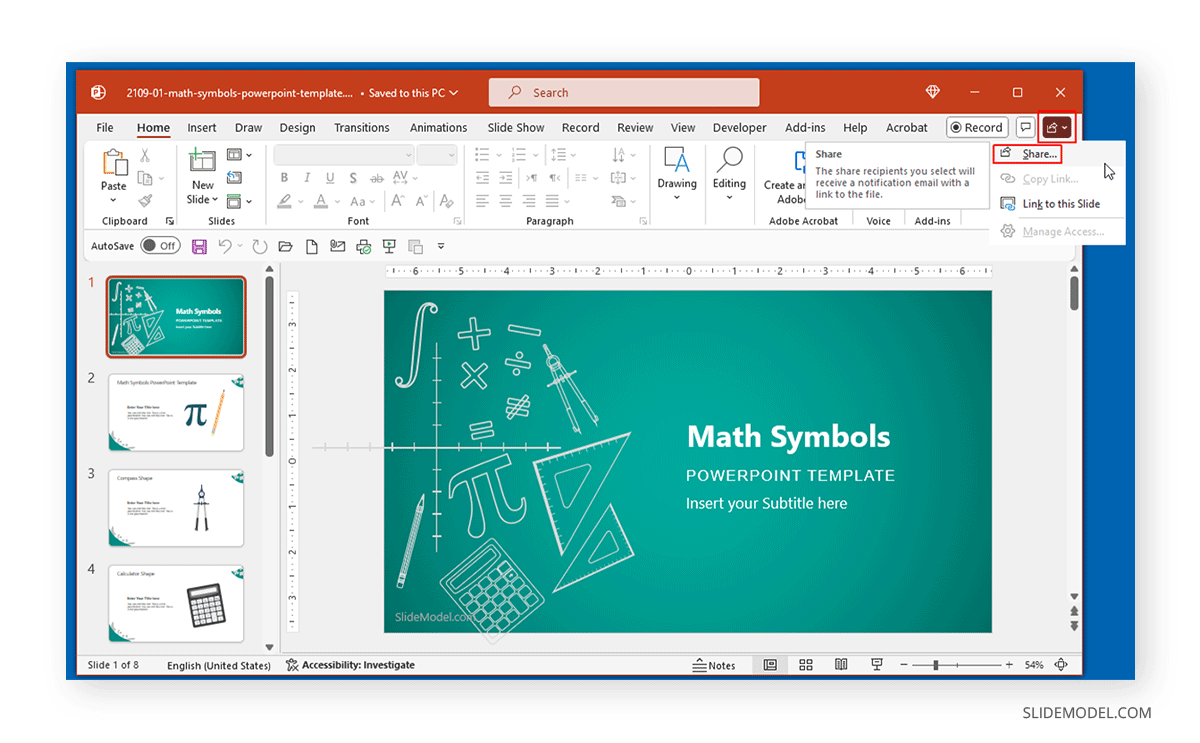
Your presentation file will be uploaded to your OneDrive account, making it editable in real-time. The changes you and other collaborators make to the file will be saved online, with a version history that can help recover older versions of the file.
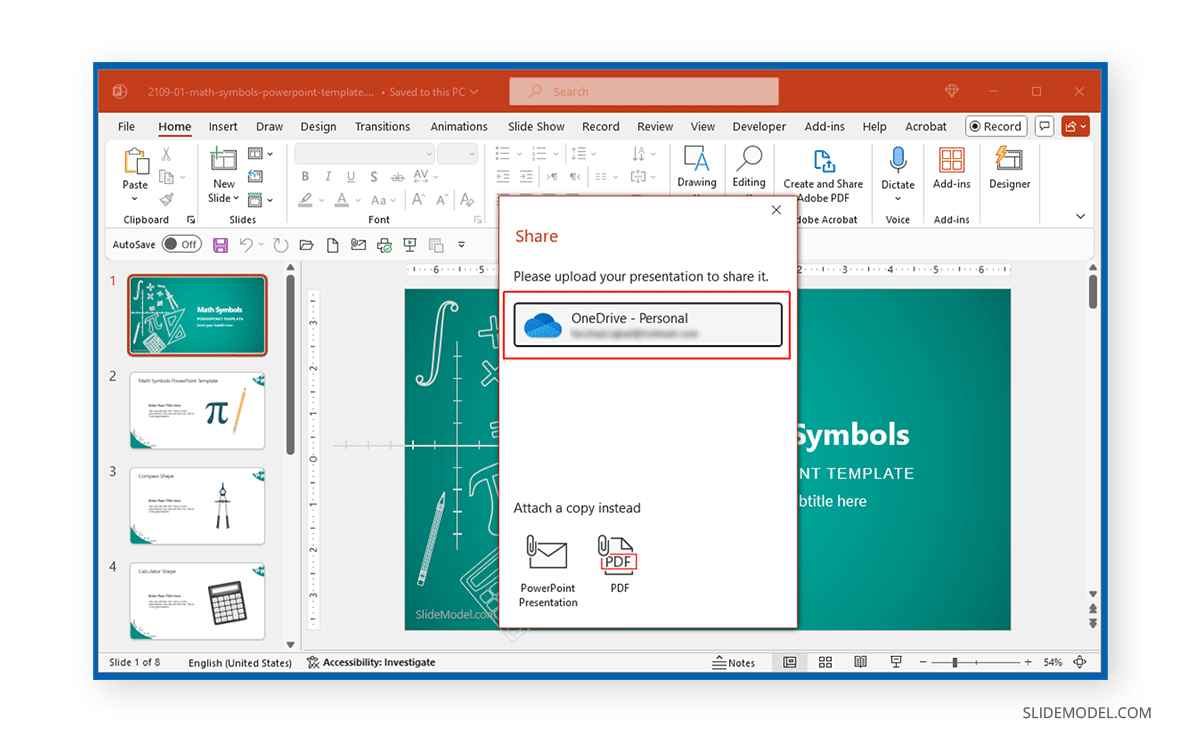
You can invite collaborators via email, copy a link, or send a sharing link via your mail client. To share a file without real-time collaboration enabled, you can also send a copy of the presentation via email in PowerPoint or PDF format.
To start a real-time collaboration with team members, simply copy the link and share it with them or enter the recipient’s email address and click Send from within PowerPoint. Different Office apps provide sharing options for files relevant to PowerPoint users. You can learn about sharing PPT in Teams from our tutorial about sharing a PowerPoint presentation on Microsoft Teams.
You can also learn more about sharing PowerPoint files from our article about how to share a PowerPoint presentation. If you’re looking for similar options for Google Slides templates, see our post about how to share a Google Slides presentation.
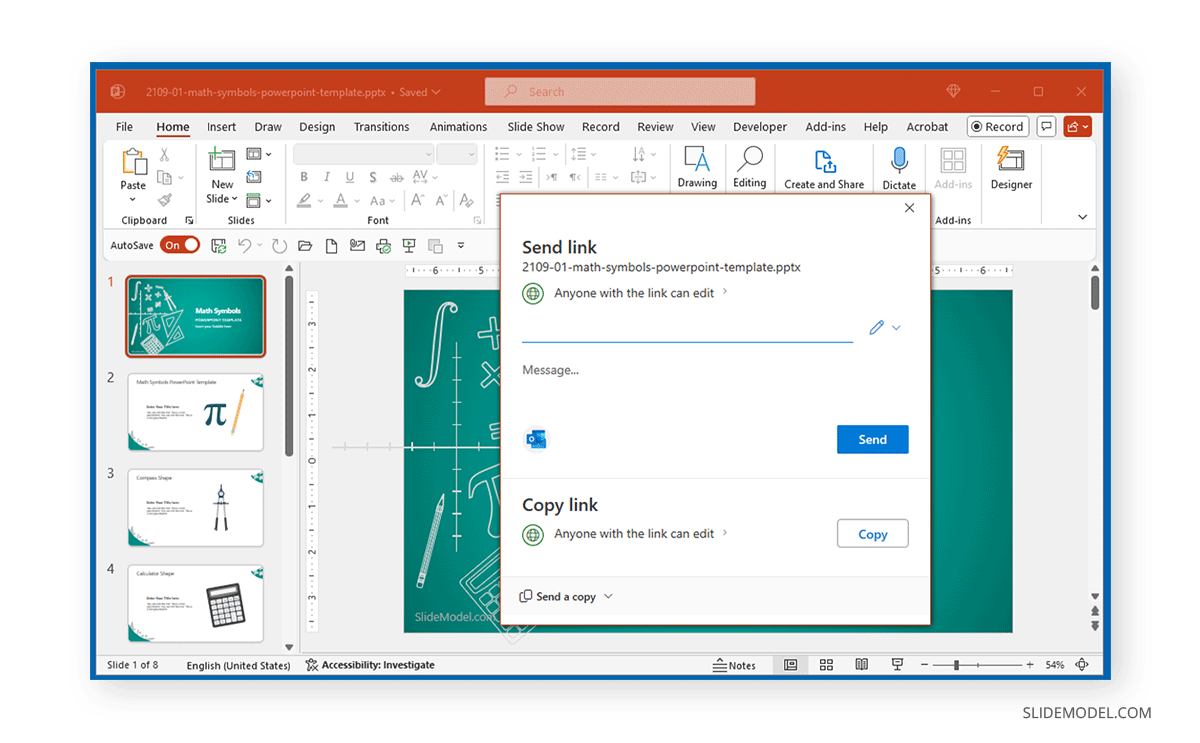
How to Enable Editing for Collaborators
If you’re wondering how to enable editing in PowerPoint when sharing your PowerPoint file, the answer lies in the dropdown menu in the dialog box for inviting collaborators. You can edit the settings to enable editing for people you ask for online collaboration.
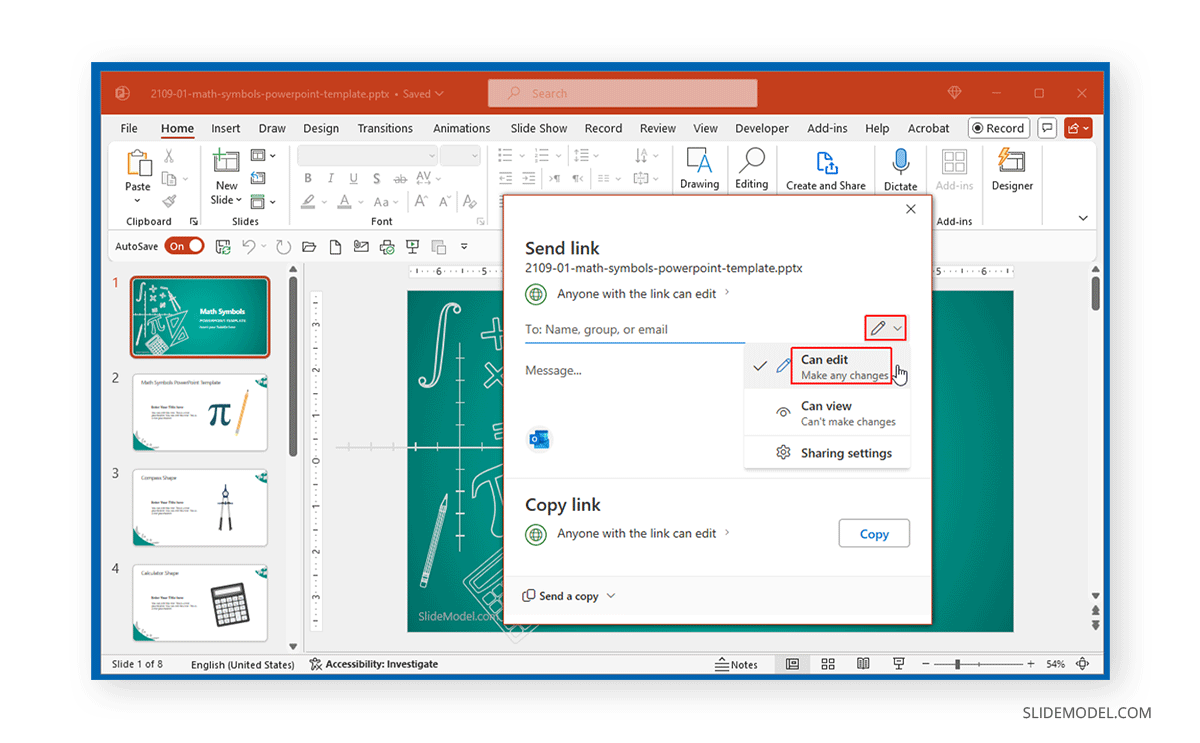
How to Manage Sharing Settings in PowerPoint
You can also manage settings via Share -> Sharing Settings for more specific collaboration options. For example, if you need answers to questions like how do I share a PowerPoint template with others, Sharing Settings can be a good place to make specific sharing choices.
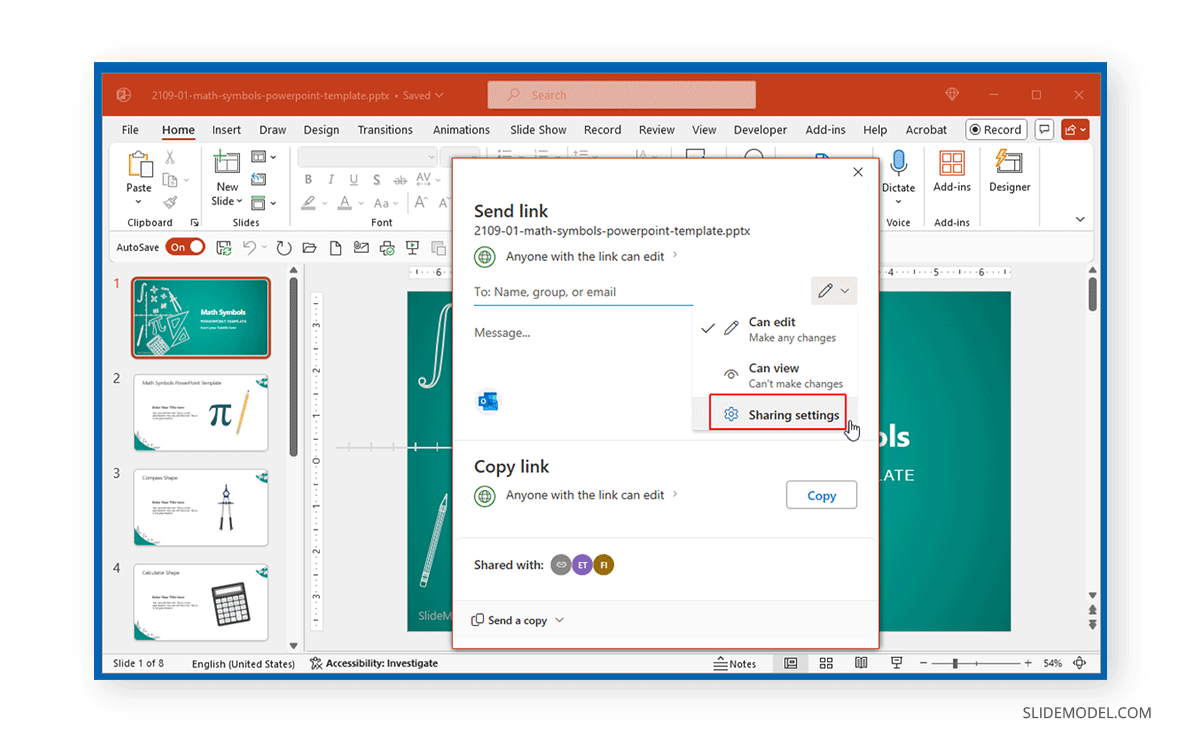
The Sharing Settings enable you to choose whether to generate a link that can be shared with anyone, share the file with specific people you choose to invite or set an expiration date or password for sharing your file. If you’re using a corporate account, you can also share a file within the organization only.
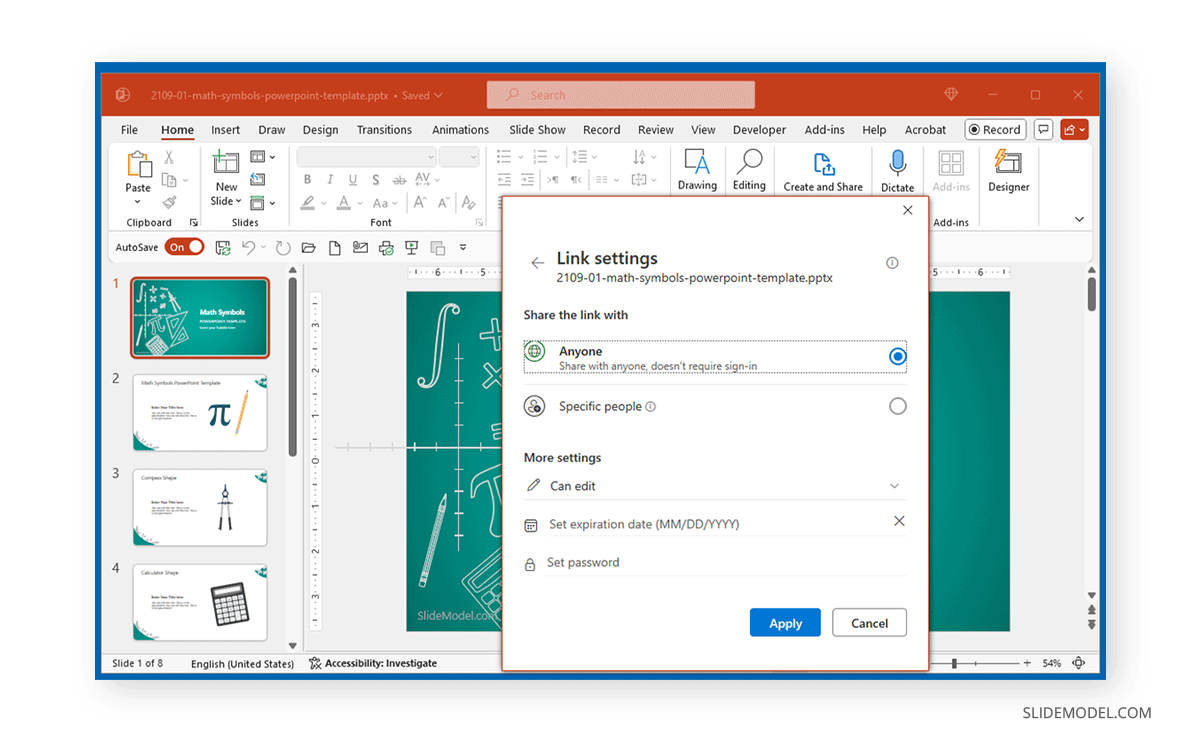
How to Track Changes when Collaborating on a PowerPoint Presentation
Once you begin editing a file, you can see who is making changes to the file. These changes will be made real-time, as multiple users edit the file.
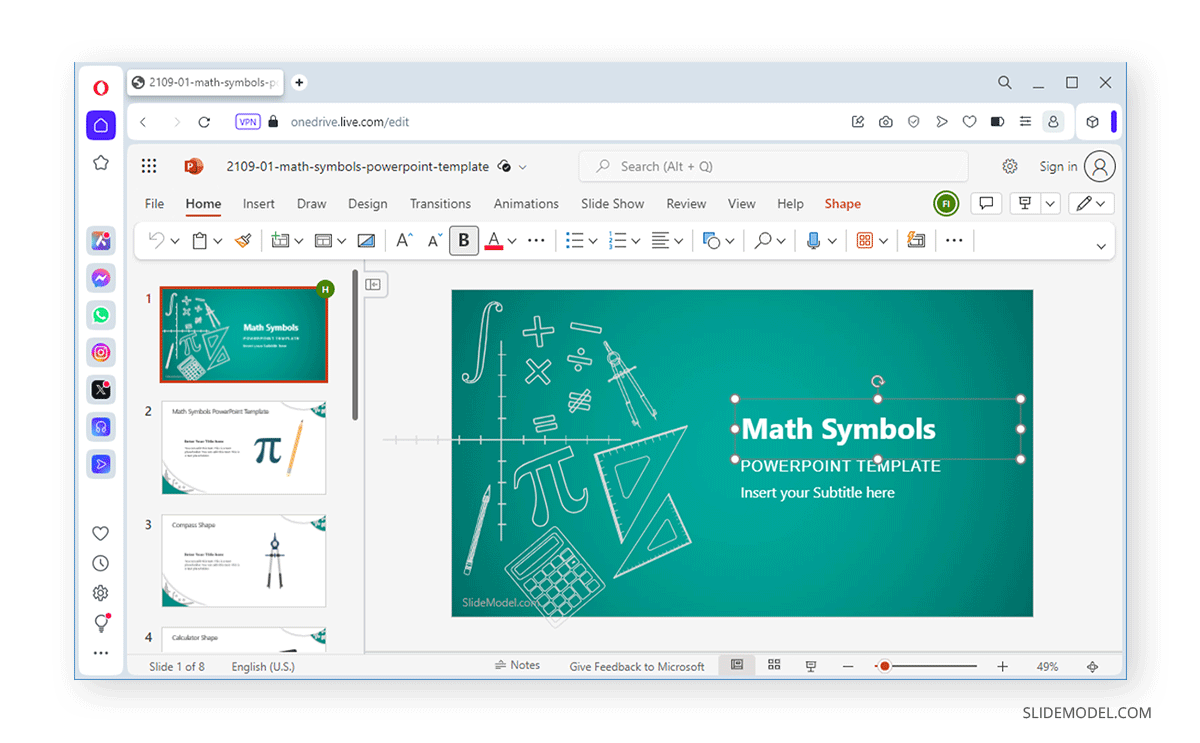
A user may make changes from different Internet-connected devices, such as a desktop or mobile browser or the PowerPoint app for desktop or mobile.
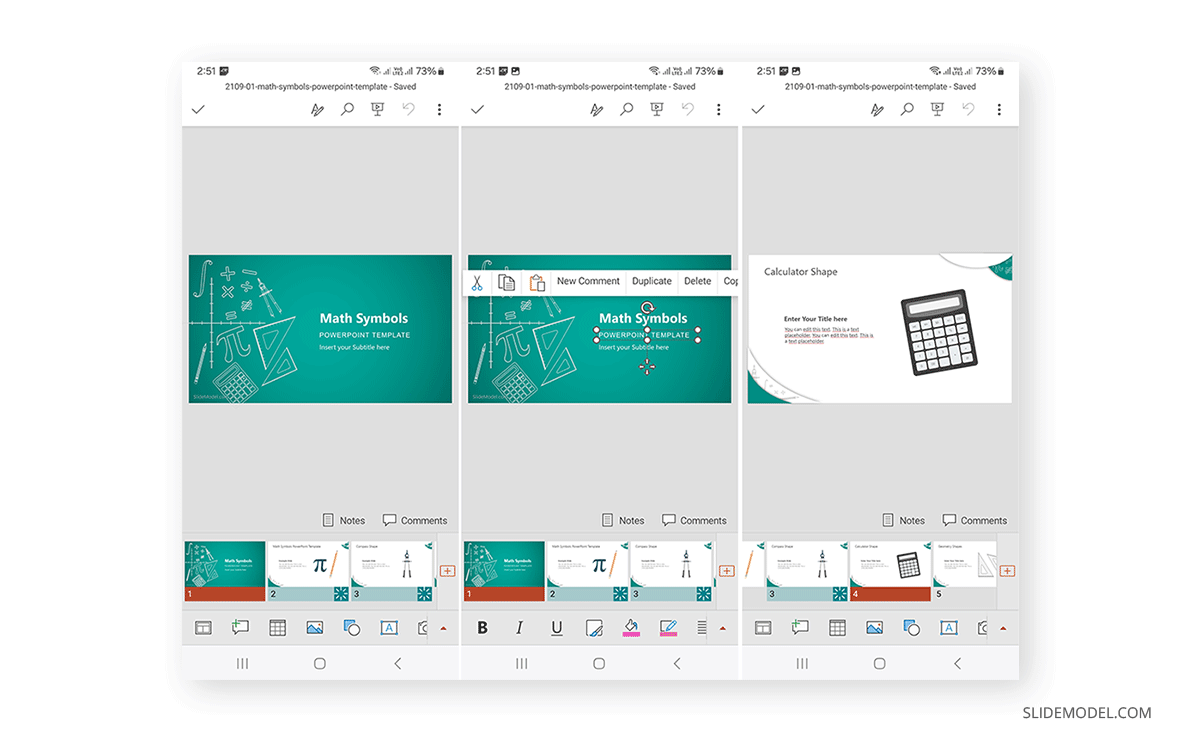
Real-time changes will be visible with the collaborator’s name. If the team member making the changes is not logged in, you will see a guest name representing the online collaborator.
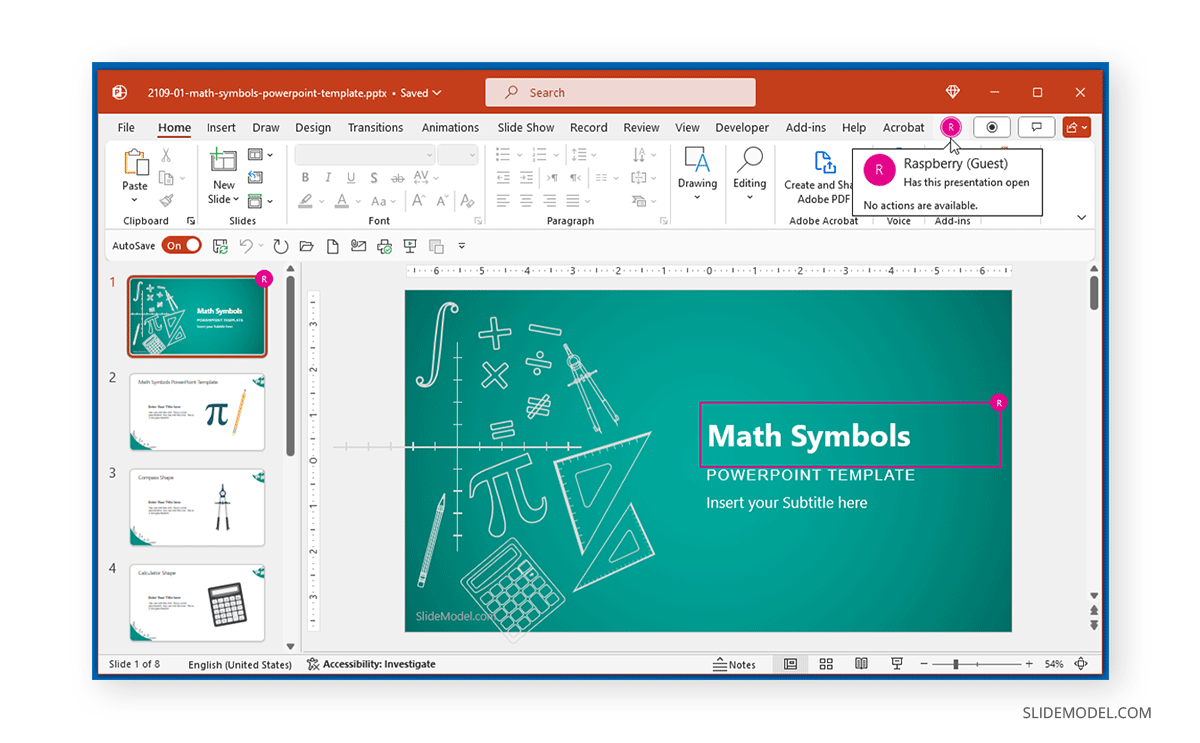
You can track more specific changes to the file by going to version history. To access version history, go to File -> Info -> Version History.
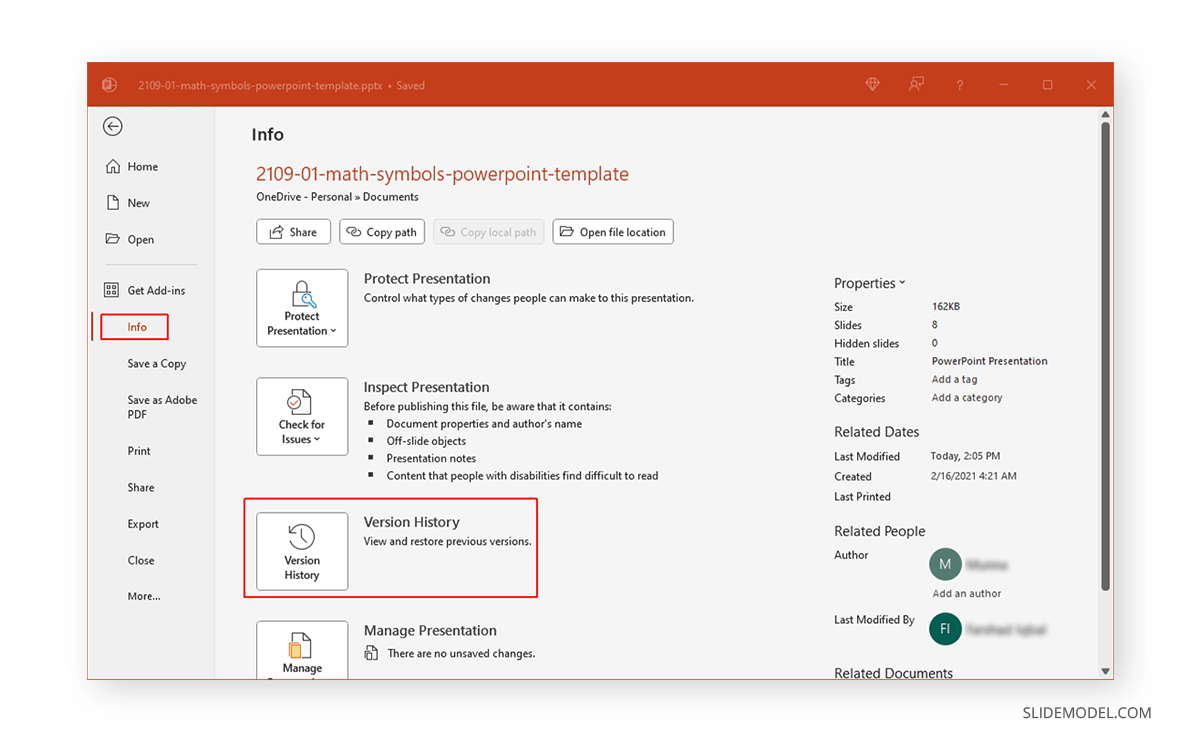
The changes made to the document will be shown in the sidebar, where you can click to preview and restore old changes anytime.

If you wish to return a specific file version, it can be revealed for preview and restored to apply the old changes to the PowerPoint file. Furthermore, you can also save that version separately as a different file.
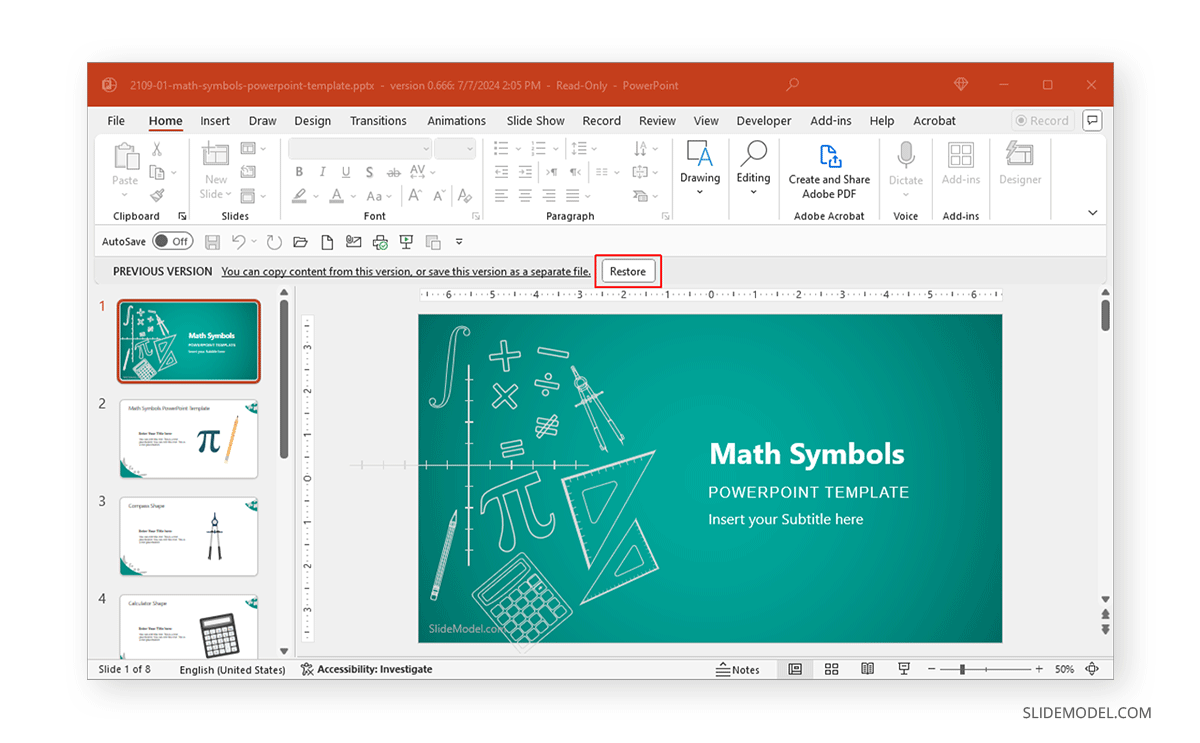
How Do You Link Two PowerPoint Presentations Together for Online Collaboration?
You might want to link two PowerPoint presentations together for online collaboration. You can do this by using a link to open a file in PowerPoint. To get started, go to a file saved to OneDrive and open it to share the file. Copy the link for the file via Share -> Share.
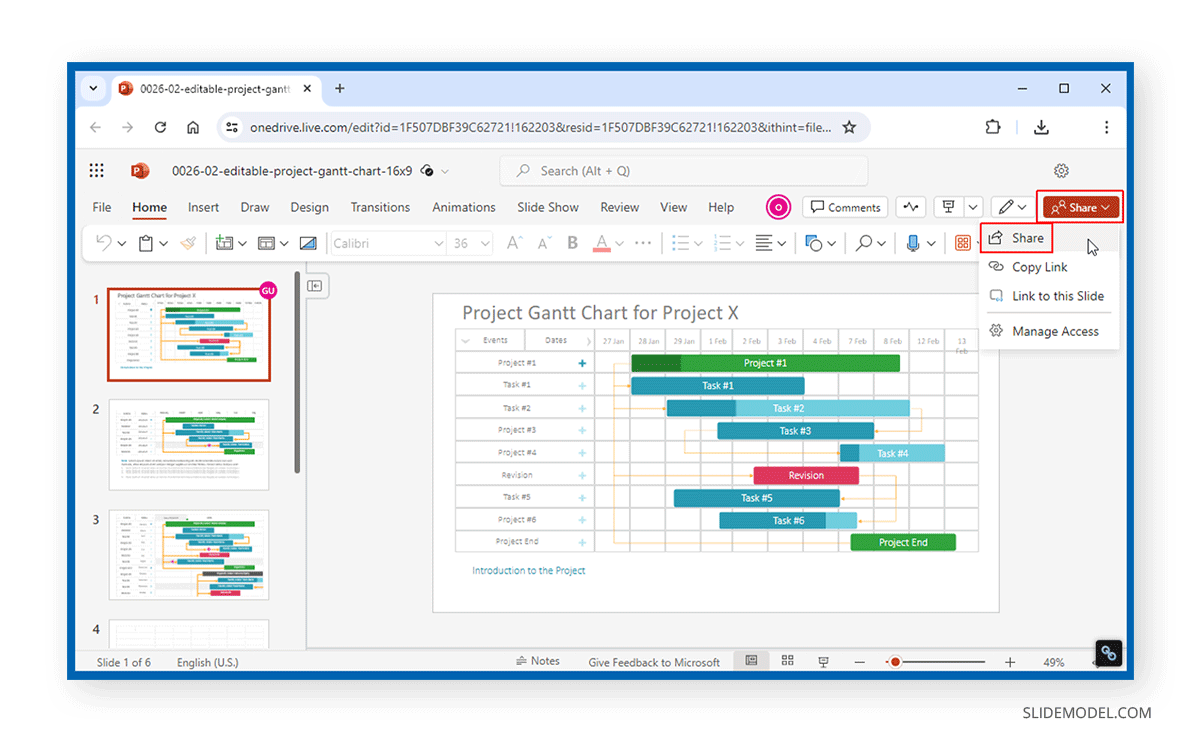
Ensure you have configured the correct file settings for sharing and copying the link. This will generate a link that you can share with other collaborators. People who open the file via the shared link can also edit it without the need to log into a Microsoft account. If you’re worried about privacy, you can also restrict the link to specific people or people within your organization before generating the sharing link.
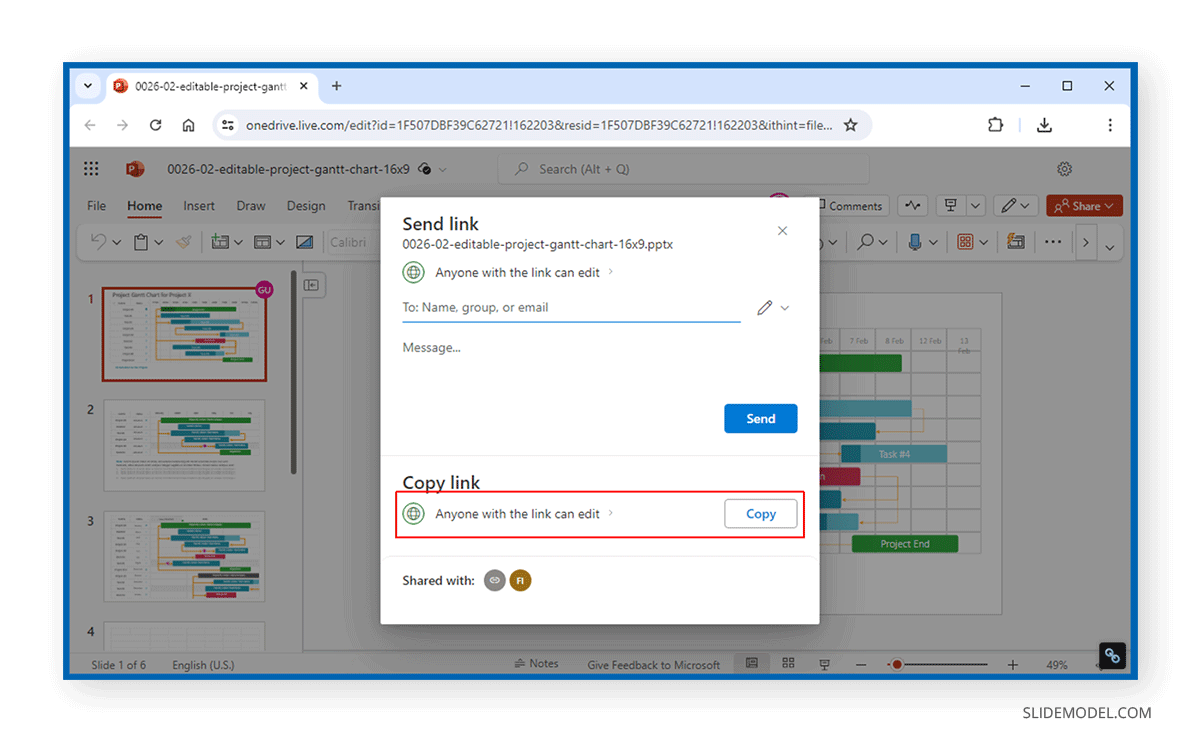
Open the PowerPoint file with which you wish to link the other presentation template and hyperlink an object via Insert -> Links -> Link. Your copied link should show up to link the slide instantly.
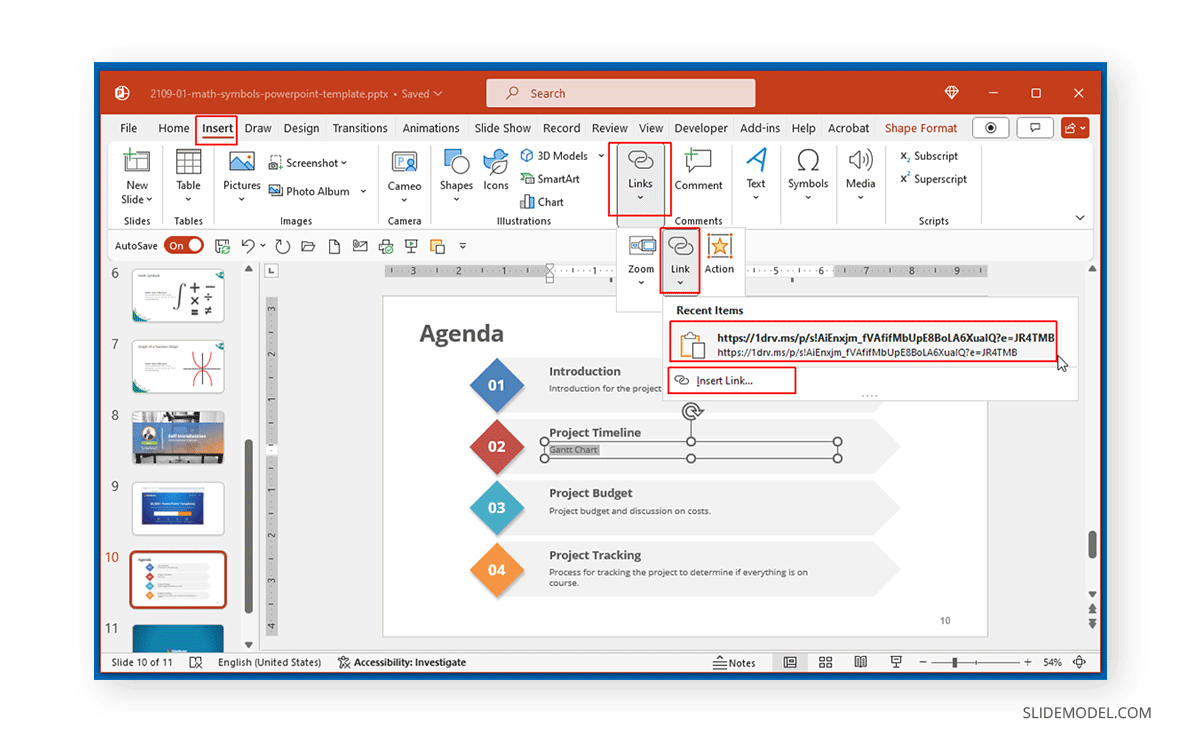
Alternatively, you can use the Insert Link option and enter the copied URL to link the slide.
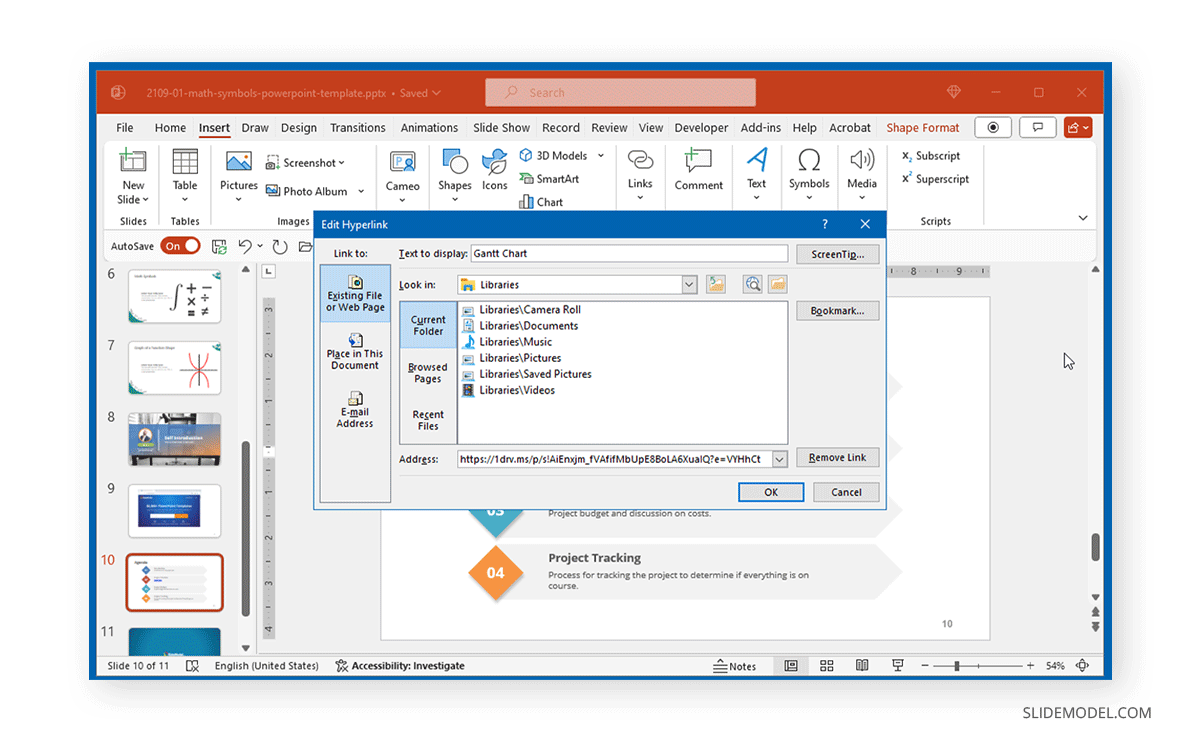
In this example, we linked text with a Gantt Chart template. You can open the link by clicking it in SlideShow mode or by opening it in a browser on the PowerPoint app when editing the presentation.
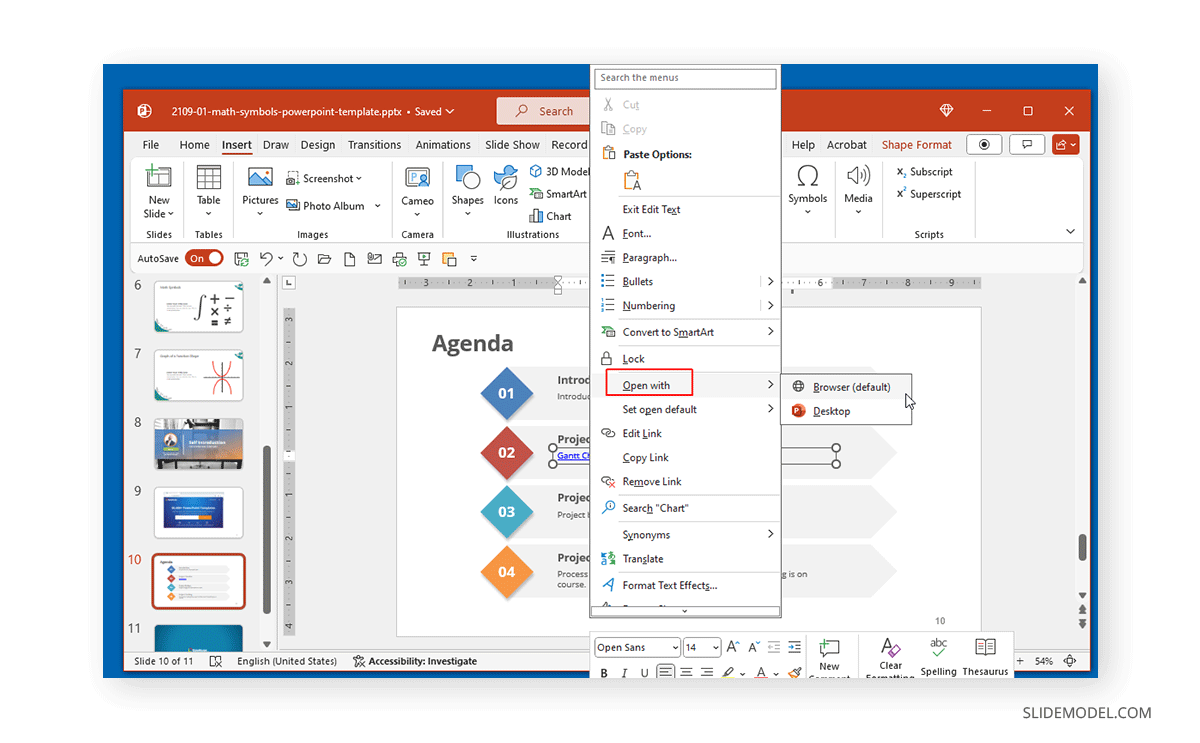
Once opened, anyone with the presentation file who opens the link can view or edit the linked file. Anyone with the shared link or assigned privileges to manage the file will be able to edit the file in real time. You can also restrict users to viewing the file only if that is the intention when sharing the linked file with online collaborators. This might be the case when you are sharing files that have content that has been finalized, such as budgets and timelines.
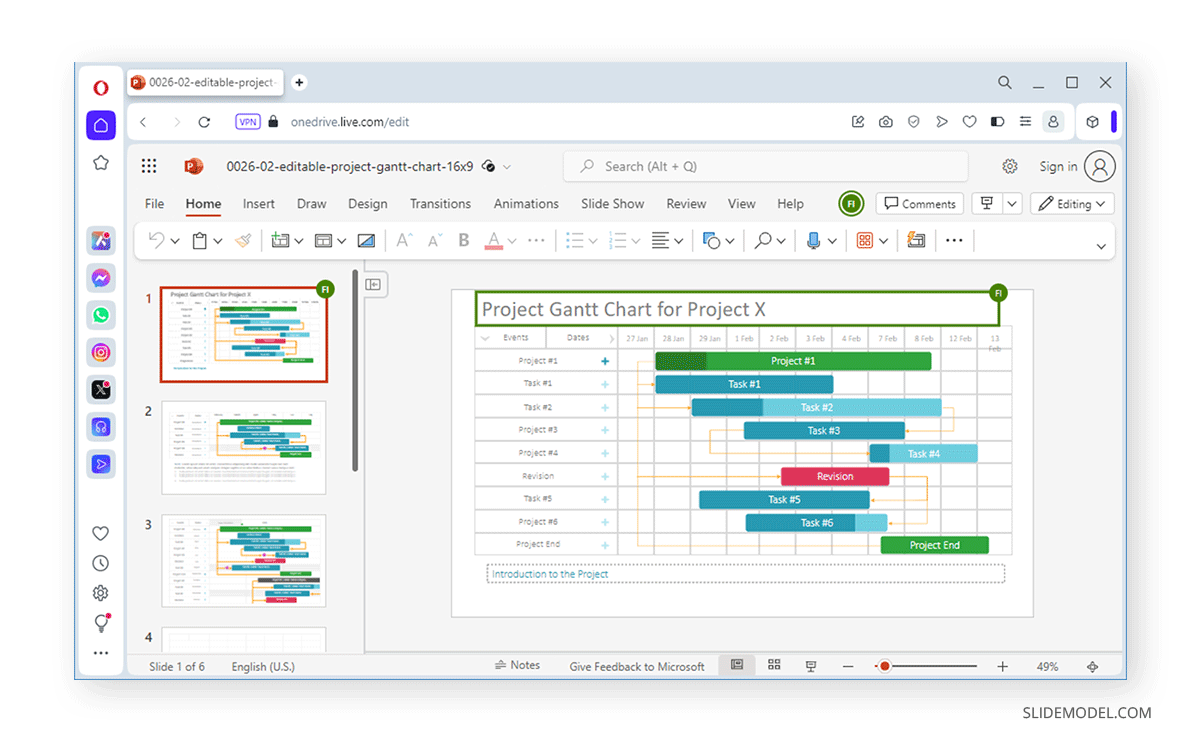
What is the 10 20 30 rule in PowerPoint?
While it’s easy enough to collaborate on a presentation, fundamental questions like how to start and end a presentation often plague presenters.
The 10 20 30 rule in PowerPoint presentations was the brainchild of marketing specialist Guy Kawasaki. A former Apple employee, he is credited with marketing the Macintosh computers. The 10 20 30 rule calls for no more than ten slides, presented over no more than 20 minutes, with each slide being at least 30 points in font size. This makes the presentation brief and to the point, allowing the presenter to use their skills to persuade the audience. You can learn more about this rule from our post about the 10/20/30 Rule of PowerPoint presentations.
Online Collaboration PowerPoint Templates
Now that you know how to make a presentation shareable for online collaboration, below are a few suggested templates.
Free Remote Work Transformation PowerPoint Template
The Free Remote Work Transformation PowerPoint Template, as the name suggests, is a presentation template about work from home and remote work. The presentation template gives editable slides with themes like online collaboration, remote meetings, and online education. There is 1 title and three content slides with editable illustrations that you can customize to match your needs.
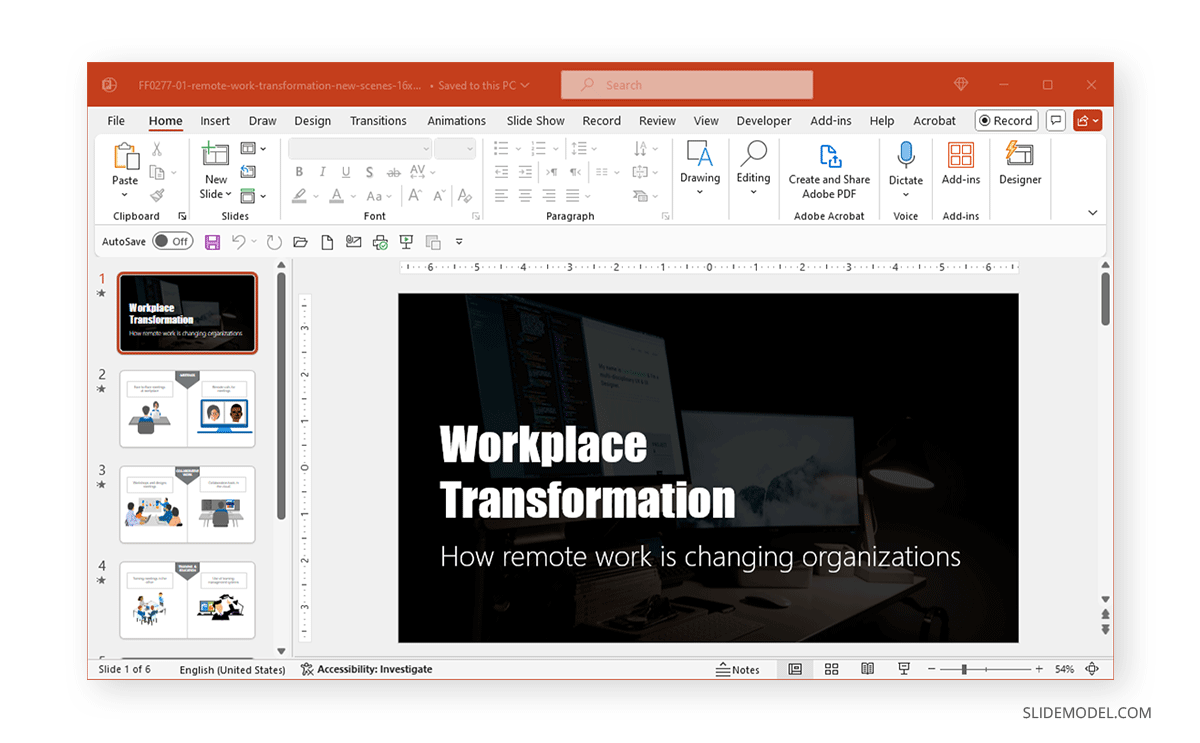
Shared Vision PowerPoint Template
Teams work best when they have a shared vision. This is often the mantra when teams work together to collaborate and work together on projects in an organization. The Shared Vision PowerPoint Template embodies this very concept in the form of PowerPoint slides depicting teamwork, collaboration, and synergy with a shared vision among team members.

Final Words
While it took Microsoft a few years to catch up with Google Drive and other services that began providing online collaboration and sharing features more than a decade back, the features now available for Office apps like PowerPoint are pretty robust. Over the past decade, Microsoft has extensively worked on providing online collaboration features that can make real-time collaboration seamless and practical. While collaborating on a PowerPoint presentation can still mean a few lags and some wait time before changes sync in real-time, the partnership features still provide excellent support for remote collaboration.
Teams can now create a single slide deck by adding value and reviewing content remotely without the need to reshare a single presentation multiple times and restore and save older versions of the file anytime. This makes it practical and easy to work on a single PowerPoint file for online collaboration without worrying about changes that might overwrite something unexpectedly due to an error by one of the online collaborators. Furthermore, people who don’t have a Microsoft account can use a shared link to view, download, or edit a presentation file without the need to log in with a Microsoft account. All that can be done from an Internet-connected browser, making online collaboration not limited to a desktop computer with a PowerPoint app.
